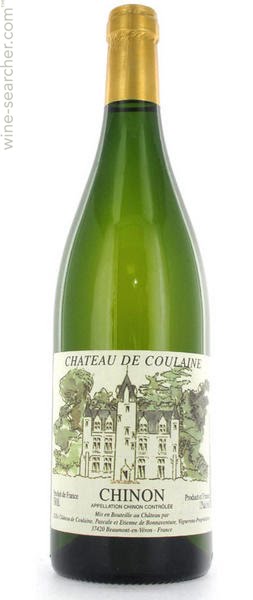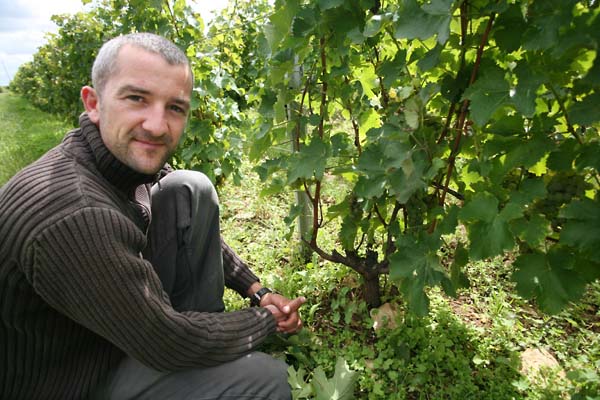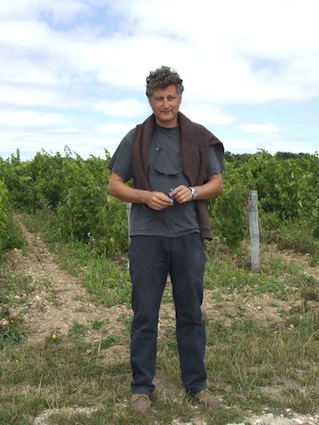Here’re a few more newbies to have snuck onto our list in the past few months–well worth a taste. Check out what Doug Wregg has to say about them:
2010 Ribeyrenc Noir, Thierry Navarre – Languedoc

To the inveterate snapper-upper of ampelographical recondite trifles this should tickle your Ribeyrencs, not only because it inhabits the deepest part of cow corner in the left field of grapes, but also because the wine has a gentle joyful magic to it that is, quite simply, irresistible. As you may know, o best beloved, before the phylloxera epidemic, Aspiran (as Ribeyrenc is also known) was common in Languedoc, particularly in Hérault, where it once represented a quarter of the plantations in this department. The grape variety is probably named after the town Aspiran in Hérault. The severe frost in 1956 killed off much of the then existing vineyards. In 1988, only 7 hectares (17 acres) remained and the variety is not being replanted. Alas and alack. Step forward Monsieur Rescue Med Grape himself, Thierry Navarre, to archive this variety for aspirin’ (sic) grape detectives. Ribeyrenc, in its Gris form also features in a wilfully obscure blend from Domaine Henry whilst the Domergues in Minervois also have a few vines, but this is the best opportunity to taste it in its purest and simplest form.
Thierry’s version is a quite beautiful wine. It reminds me of scented violets with notes of cinnamon and muscat grape showing through, followed by a wild herbal twist. In the mouth the wine reveals limpid red fruit and a soft, velvety texture. By means of strict organic viticulture Thierry has managed to recover the freshness and finesse of the grape and link it to the terroir of Roquebrun.
Only a minuscule amount of this wine is produced. Tiny allocation only.

Coulaine’s low yields (around 35 hl/ha) result in a deeply concentrated, savoury and succulent expression of Cabernet Franc with ripe and polished tannins – a harmonious balance between traditional and modern style. Les Picasses itself is from various parcels comprising 1.8 ha of Cabernet Franc vines, some 20 years young, some as old as 80 years, the terroir being clay-limestone on a bedrock of tuffeau jaune. Fermented in cement with malo and ageing in demi-muids of various ages 1/3 new, one and two year old respectively. The wine reveals the concentration of the vintage with warmth, ripe fruit flavours. Etienne’s Chinon Blanc, meanwhile, comes from a tiny clay-sand south-facing parcel opposite the Château where they have some Chenin Blanc vines. The grapes are gently pressed and juice transferred into 7-10 year old barrels. The resultant wine is restrained and classy, exhibiting dried fruits and subtle butter, almond and woody notes, whilst being fresh, round and rich in the mouth.
2011 Alexandre Bain Pouilly-Fumé “Spring”
2011 Alexandre Bain Pouilly-Fumé « Pierre Précieuse »

2011 Malbec Cuatro Manos, Vincent Wallard & Emile Heredia – Argentina

The four hands belong to two winemakers, Vincent Wallard, former wine bar owner, and Emile Heredia, doyen of natural wine in Vendomois and latterly the Languedoc.
Vincent journeyed throughout Argentina and Chile “to share the experience of winemaking that Emile has, or to share the experience of other winemakers whom I intend to take to Argentina or to Chile, in order to spread the word about a different way to make wines, because everything is controlled in Latin America which largely takes its inspiration from the American approach – where the notion of terroir is just a marketing tool and not a reality.” The culmination of this journey was the Cuatro Manos project.
The Malbec comes from organically-grown grapes the in Maipu/Junin zone south-west of Mendoza. The wine was fermented in a semi-carbonic maceration ‘sandwich’, of 1/3 whole grapes in- between two layers of de-stemmed grapes in a single 120-hectolitre cement vat. After the fermentations the free-run and press juice was blended, the resultant wine racked with a small amount of sulphur added and the wine kept in closed vats for four months. After one final racking the Malbec was bottled without filtration, fining or sulphur in mid-November.
A far cry from the dense chocolate nemesis style wine favoured by certain oenologists and critics this is a South American Beaujolais-style Malbec – which is not as transgressive as it sounds. Red rather than black fruits are to the fore, redcurrants, cherries etc. and the wine is sapid and earthily refreshing the wine is reminiscent of a Côt from the Loire with the minty-herbal edge one might associate with the wines of Cahors.

